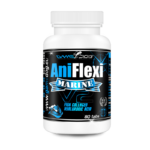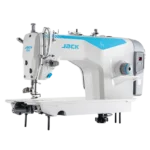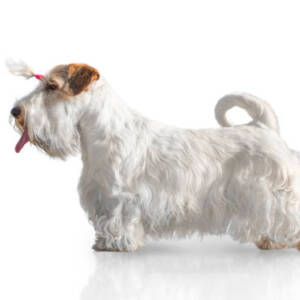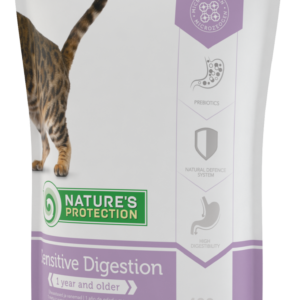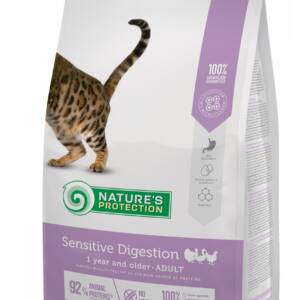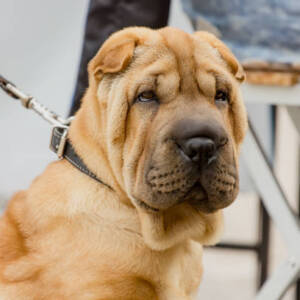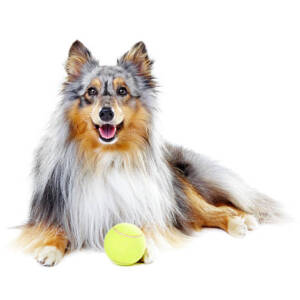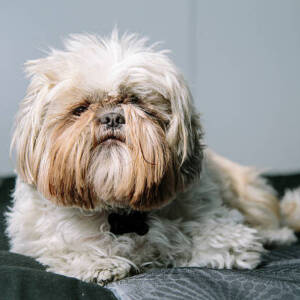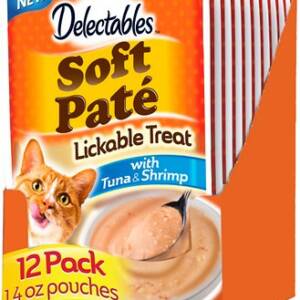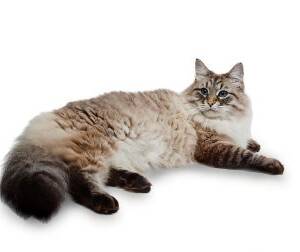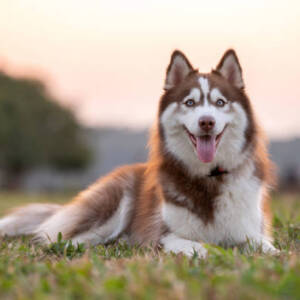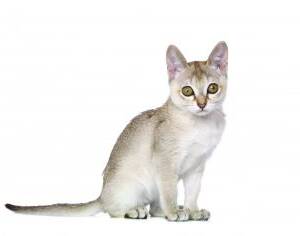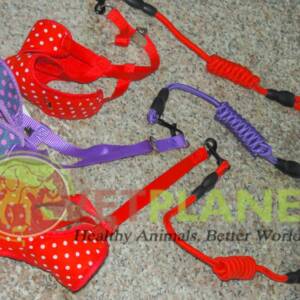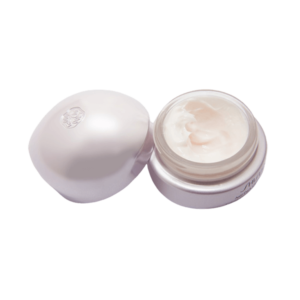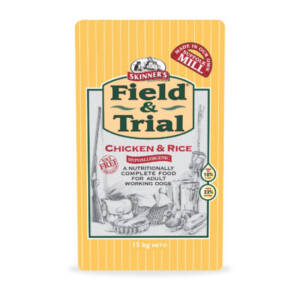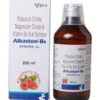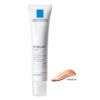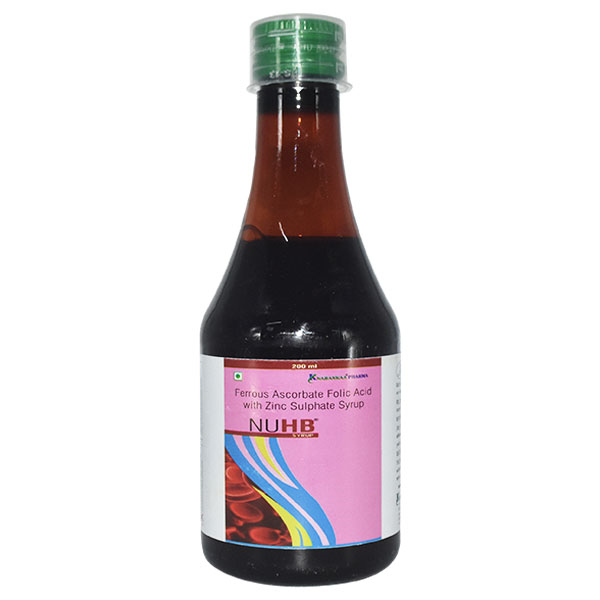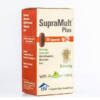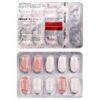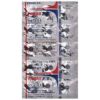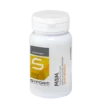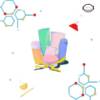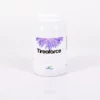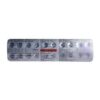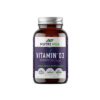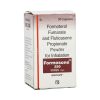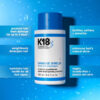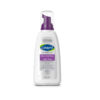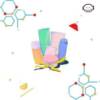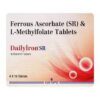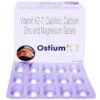-
ALKASTON B6 200ML SOLUTION ₦4,305.50 QTY: 1
-
La Roche Posay Effaclar Duo+ Unifiant Tinted Medium Cream 40Ml ₦73,200.00 QTY: 1
-
NUHB Syrup 200ml ₦30,600.00 QTY: 1
-
Supramalt Plus Ginseng Selenium Multivitamins 30 Capsules ₦2,850.00 QTY: 1
-
PRICHEK M 2MG STRIP OF 10 TABLETS ₦3,588.75 QTY: 1
-
Zachelase Junior Pharmaluce 10 Vials of 10ml ₦36,613.00 QTY: 1
-
ENVAS 2.5MG TABLET ₦1,351.25 QTY: 1
-
Vitabiotics Pregnacare Original - 30 or 90 Pack ₦11,900.00 QTY: 2
-
Syform Msm Food Supplement 60 Tablets ₦28,443.00 QTY: 1
-
Zerodol Tablet ? 10Tab ₦370.00 QTY: 1
-
ARET GEL 0.025 % 20GM ₦2,083.25 QTY: 1
-
TIREOFORCE 60CPS ₦82,783.00 QTY: 1
-
ALLERONE 5MG TAB 10`S ₦1,443.75 QTY: 1
-
EPNONE T 10 COMBIKIT STRIP OF 20 TABLETS ₦4,755.75 QTY: 1
-
Nutri Nua Vitamin D3 2500IU Vegan Capsules - 30 Pack ₦19,200.00 QTY: 1
-
ATORTRUE F STRIP OF 10 TABLETS ₦1,629.50 QTY: 1
-
Formosone 250 Respicap 30?S ₦49,300.00 QTY: 1
-
Damage Shield Conditioner ₦88,328.00 QTY: 1
-
Skinlite Cream 25gm Pack of 2 ₦39,900.00 QTY: 1
-
DAILY IRON SR TABLETS 15?S ₦1,670.75 QTY: 1
-
OSTIUM K2 STRIP OF 15 TABLETS ₦8,075.25 QTY: 1
Customer matched zone "Lagos Delivery Options"
“OSTIUM K2 STRIP OF 15 TABLETS” has been added to your basket. Continue shopping
Sort by:
209–224 of 1584 Results
-
Dog Breed In 1850, Captain John Edwardes, of Sealyham, Haverfordwest, Wales, set out to establish the breed which we know today as the Sealyham Terrier. Captain Edwardes was intent on creating a new breed which was small, robust, dead-game and not only intelligent but also of pleasing appearance. Though the combination of breeds that produced the Sealyham has always been kept secret, it is generally thought that its ancestors were the Pembroke Welsh Corgi and the Dandie Dinmont Terrier. Average lifespan Sealyham Terrier This dog breed can live up to 15 years. Average size and weight 31cm 8.2kg to 9kg Breed personality, characteristics & temperament of Sealyham Terrier Those fortunate people who have had a good Sealyham Terrier seldom want one of another breed in its place. A good Sealyham is meant to be good in character, health and looks. This dog breed can completely satisfying as companions in and out of doors. They make very good guards. This breed can become devoted to their family of owners, they never forget a friend or a foe. They are most affectionate and return the love they get fully and joyfully. Sealyham Terrier Compatibility with other pets They can be taught to live with cats, other dogs, and birds. His boisterous nature, particularly with older pets, can be annoying but once he settles into a family, peace returns! Care requirements No family should take on them unless they are prepared to look after it properly and particularly looking to the coat care. Being white, this double coat needs regular combing with a strong wire comb to get right down to the job of keeping the coat free of matting. This little dog does not suffer with any major health problems. Ideal owners This dog breed is suitable for those ready to give much love and attention to their petSku: 1713900588-1455
Sealyham Terrier Dog Breed
-
-
-
SENSITIVE DIGESTION ? ? A HIGHLY DIGESTIBLE FORMULA FOR ADULT CATS 1 year and older ? ?400 g, 2 kg, 7 kg ? ? ? The 100% complete and balanced diet is specially developed for cats with a very delicate digestive system.? New formula contains even 92 % of animal protein for the better palatability and digestibility of the feed. The composition is supplemented with certified salmon oil.? All ingredients are specifically chosen to avoid stomach and intestinal overload.? The special protein source (Turkey) and carbohydrate sources (potato, barley) are easy to digest.? Plant extracts, nutraceuticals and natural fibre sources further contribute to optimal digestion.? ? ? BENEFITS COMPOSITION DAYS NORMA ANALYTICAL INGREDIENTS Composition: poultry meal, dried potato pulp, rice, poultry fat, maize, hydrolyzed animal proteins, sugar beet pulp, hydrolyzed chicken liver, dynamic micronized clinoptilolite (1%), brewers? yeast, salmon oil, chicory extract, mannan-oligosaccharides (MOS), potassium chloride, yucca extract.? ? Additives/1 kg Nutritional additives:?nutritional additives: vitamin A (3a672a) ? 25000 IU, vitamin D3?(E671) ? 1875 IU, vitamin E (3a700) ? 688 mg, folic acid (3a316) ? 2,5 mg, biotin (3a880) ? 0,19 mg, niacin (3a314) ? 94 mg, vitamin B6?(3a831) ? 5 mg, vitamin B1?? 6,25 mg, choline chloride (3a890) ? 1563 mg, ferrous sulphate monohydrate (E1) ? 62,5 mg, calcium iodate anhydrous (3b202) ? 1,9 mg, cupric sulphate pentahydrate (E4) ? 6,3 mg, manganous sulphate monohydrate (E5) ? 25 mg, zinc sulphate monohydrate (3b605) ? 144 mg, sodium selenite (E8) ? 0,13 mg, taurine (3a370) ? 1250 mg, DL-methionine (3c301) ? 5000 mg. Technological additives:?rosemary extract, tocopherol extracts from vegetable oils (1b306(i)).? ? ??? ? ? ? ? SENSITIVE DIGESTION ? ? A HIGHLY DIGESTIBLE FORMULA FOR ADULT CATS 1 year and older ? ?400 g, 2 kg, 7 kg ? ? ? The 100% complete and balanced diet is specially developed for cats with a very delicate digestive system.? New formula contains even 92 % of animal protein for the better palatability and digestibility of the feed. The composition is supplemented with certified salmon oil.? All ingredients are specifically chosen to avoid stomach and intestinal overload.? The special protein source (Turkey) and carbohydrate sources (potato, barley) are easy to digest.? Plant extracts, nutraceuticals and natural fibre sources further contribute to optimal digestion.? ? ? BENEFITS COMPOSITION DAYS NORMA ANALYTICAL INGREDIENTS Composition: poultry meal, dried potato pulp, rice, poultry fat, maize, hydrolyzed animal proteins, sugar beet pulp, hydrolyzed chicken liver, dynamic micronized clinoptilolite (1%), brewers? yeast, salmon oil, chicory extract, mannan-oligosaccharides (MOS), potassium chloride, yucca extract.? ? Additives/1 kg Nutritional additives:?nutritional additives: vitamin A (3a672a) ? 25000 IU, vitamin D3?(E671) ? 1875 IU, vitamin E (3a700) ? 688 mg, folic acid (3a316) ? 2,5 mg, biotin (3a880) ? 0,19 mg, niacin (3a314) ? 94 mg, vitamin B6?(3a831) ? 5 mg, vitamin B1?? 6,25 mg, choline chloride (3a890) ? 1563 mg, ferrous sulphate monohydrate (E1) ? 62,5 mg, calcium iodate anhydrous (3b202) ? 1,9 mg, cupric sulphate pentahydrate (E4) ? 6,3 mg, manganous sulphate monohydrate (E5) ? 25 mg, zinc sulphate monohydrate (3b605) ? 144 mg, sodium selenite (E8) ? 0,13 mg, taurine (3a370) ? 1250 mg, DL-methionine (3c301) ? 5000 mg. Technological additives:?rosemary extract, tocopherol extracts from vegetable oils (1b306(i)).? ? ??? ? ? ? ? ? ?Sku: 1713900560-1451
SENSITIVE DIGESTION CAT FOOD
₦16,800.00 -
100% complete and balanced nutrition, specially developed for cats with a highly? sensitive digestive system. Selected protein and carbohydrate sources to avoid intestinal problems. Moderately fermentable fibre sources for a good digestion. Specific ingredients maintain the proper functioning of the small intestine and promote an optimal intestinal flora. The composition is supplemented with certified salmon oil. The oil supplier that we have chosen selects salmon from certified farms only and ensures responsible cultivation and production process that meet all requirements. Composition:? poultry meat 43% (dried and finely ground), dried potato pulp, rice, poultry fat, maize, sugar beet pulp, hydrolyzed chicken liver, dynamic micronized clinoptilolite (1%), brewer?s yeast, salmon oil, chicory extract, mannan-oligosaccharides (MOS), potassium chloride, yucca extract.? ? Additives/1 kg Nutritional additives:?vitamin A (3a672a) ? 25000 IU, vitamin D3?(3a671) ? 1875 IU, vitamin E (3a700) ? 688 mg, folic acid (3a316) ? 2,5 mg, biotin (3a880) ? 0,19 mg, niacin (3a314) ? 94 mg, vitamin B6?(3a831) ? 5 mg, vitamin B1?? 6,25 mg, iron(II) sulphate monohydrate (3b103) ? 62,5 mg, calcium iodate anhydrous (3b202) ? 1,9 mg, copper(II) sulphate pentahydrate (3b405) ? 6,3 mg, manganous sulphate monohydrate (3b503) ? 25 mg, zinc sulphate monohydrate (3b605) ? 144 mg, sodium selenite (3b801) ? 0,13 mg, taurine (3a370) ? 1250 mg, DL-methionine, technically pure (3c301) ? 5 g, L-carnitine (3a910) ? 100 mg. ? Technological additives:?rosemary extract, tocopherol extracts from vegetable oils (1b306(i)). Feeding instructions:? Serve the food dry. Clean, fresh water should be available at all times.? Analytical constituents: crude protein ? 32%,? crude oils and fats ? 20%,? crude ash ? 8,4%,? crude fibres ? 2,4%,? calcium ? 1,4%,? phosphorus ? 1%,? potassium ? 0,7%,? sodium ? 0,4%,? Omega-3 fatty acids ? 0,38%,? Omega-6 fatty acids ? 2,72%.Sku: 1713900553-1450
SENSITIVE DIGESTION COMPLETE PET FOOD FOR ADULT CATS 1 year and older Helps avoid intestinal problems 7kg
₦38,950.00 -
Shar-Pei Dog Breed The Shar-Pei originated in China and has a history dating back 2000 years. Although the exact place of origin is unclear, statues indicate they came from somewhere in southern China, Tibet or Dah-Lel. The name Shar-Pei literally translates to mean sand skin. This is from the breed?s characteristic harsh coat. Shar-Pei were used as general utility dogs for herding and guarding. They were also known as tomb dogs, relating to the discovery in ancient tombs of 2000-year-old statues bearing their likeness. When China became a communist country, a tax was brought in that made the keeping of dogs a luxury and basically out of reach of the average farmer. In 1947 the tax was increased and breeding banned. This led to the Shar-Pei becoming an endangered breed and it was listed with the Guinness Book of Records in 1978 as the world?s rarest dog. Average lifespan The Average lifespan for a Shar-Pei is 10 to 12 years. Average size and weight 46cm to 51cm 20kg Breed personality, characteristics & temperament Shar-Peis are intelligent dogs needing little training. Although they are somewhat aloof, snobbish and reserved in the presence of strangers, they are extremely loyal and devoted to their family. Essentially they are an independent, regal, alert and dignified animal with a calm and confident stature. Compatibility with other pets The Shar-Pei is primarily a working dog, although it is placed in the non-sporting classification. Socialisation with other animals is important, as they can be aggressive with other dogs of the same sex. Personality and temperament is an individual thing. Some Shar-Peis will live quite happily around smaller animals and livestock while others may exhibit the natural instinct to hunt. Care requirements They are easy to look after and contrary to common misperceptions they do not require special maintenance of their abundant wrinkles. Normal dog management, vaccinating, worming, treating for fleas, bathing, and general welfare will ensure you a healthy dog. They are not a smelly dog and the length of the coat means no brushing is required. Attention needs to be paid to the ears as they can get dirty due to the lack of air circulation. Dietary requirements are a simple well-balanced dog diet with special attention paid to avoiding artificial colours, preservatives and red meat. Other ingredients to be avoided are corn, and soy products. These can lead to allergic reactions in this breed. Please take note Being an exceptionally intelligent dog makes the Shar-Pei an ideal companion. Whether your intention is to exhibit at conformation shows, participate in obedience trials, or just to own a loving, loyal pet. The Shar-Pei is sure to bring great satisfaction. They enjoy both the open spaces of a country life and the suburban neighbourhood life, and are equally happy indoors or out. They excel at obedience work and delight in pleasing their owners, which makes them a pleasure to train. Shar-Peis have been called the Chinese Fighting dog, this is a misnomer of sorts as they are not a dog that will savagely seek out disputes with other animals, they will, however, retaliate with fervour should they be aggravated. Ideal owners Shar-Peis are a one-man dog, although living in a family situation they will love everyone, they will always have their own person and it may not be the one you choose but the one they choose to bond with. The ideal owner will appreciate the loyalty this breed exhibits and also respect its need for space with new situations. They need exercise, socialisation, love and attention to be a happy, well-balanced pet.Sku: 1713900533-1447
Shar-Pei Dog Breed
-
Shetland Sheep The Shetland Sheep dog, or ?Sheltie? as it is affectionately known, originated from the Shetland Islands where it was used by crofters as a sheep dog. Few Shelties are used today for their original purpose as sheep dogs, but those people who have worked them vouch for their incredible stamina and instinctive ability to herd. Often referred to as a miniature Collie, they certainly has the overall appearance of the Rough Collie, however, it is a breed in its own right and possesses some minor distinguishing features, apart from the obvious size difference. Average lifespan of Shetland Sheep dog Shetland Sheepdogs live from between 12 to 16 years of age. Average height & weight 35cm to 37cm 6kg to 7kg Breed personality, characteristics & temperament of Shetland Sheep dog Although rather a small breed, the Shetland Sheep dog is certainly not fragile. When feed was in short supply on the farms, the original Shelties were ferried on to small outlying islands with a flock of sheep and left for long periods to guard the flock and fend for themselves. Only the hardy would have been able to survive. When brought back to the farms after such isolation, the dogs would thrive on attention and affection. It is probably this part of their history that makes them so devoted to their owners, but suspicious of intruders and intent on protecting the family. Shetland Sheep dog Compatibility with other pets Excellent. It can live happily with the family cat and will get along with most other dogs. Care requirements The Shetland Sheep dog?s glamorous jacket requires surprisingly little attention. A brush and a comb behind the ears each week will keep it in good condition. The breed?s double coat enables it to adapt to both hot and cold weather, the second layer (undercoat) giving insulation against both heat and cold. Please take note This dog breed is certainly capable of barking, it is also smart enough to be trained not to bark unnecessarily. It makes an excellent watchdog and will alert you to visitors or unusual occurrences. Ideal owners Almost anyone will benefit from owning a Shetland Sheepdog. The ideal owner is someone who understands the need for occasional grooming.Sku: 1713900523-1446
Shetland Sheep Dog Breed
-
Shih Tzu Dog Breed Shih Tzu dogs are of Asian origin, specifically from Tibet. They were offered as gifts to the Chinese royalty. Big round eyes, floppy ears, a short snout, and an extra hairy coat are some of the reasons why people love Shih Tzu dogs. Their friendly and playful nature makes Shih Tzus great pets and they are a good choice for first-time pet owners. They also require minimal exercise and are good with both adults and children. Shih Tzu?s temperament can be defined as happy and affectionate. They thrive best in a climate that remains moderately warm and cool at the same time. These dogs face some health issues in summers and winters but by taking proper care you can avoid these issues altogether. ? Key specifications of Shih Tzu Dog Breed: Weight: A healthy Shih Tzu dog weighs between 4.5kg to 8.1kg. Height: It stands 8 to 11 inches tall but walks and runs in confident strides. Lifespan: Shih Tzu?s lifespan is 10 to 18 years, but its average life expectancy is around 12 years. Coat: The coat is its main attraction. If not groomed and maintained, the hair on a Shih Tzu?s coat can grow up to its feet. Teeth: Shih Tzus often tend to develop an underbite, a dental condition wherein the dog?s lower teeth extend farther than the upper front teeth. Behavioral traits of Shih Tzu Dog: A Shih Tzu is a family pet and loves all the attention you will shower on it. Shih Tzu?s personality is friendly, and it is kind to children as well. It is a jolly dog who loves playing around. It does not shy away from displaying their emotions. A Shih Tzu will immediately let you know if something has irritated them or even if they are happy. It is quite known for its assertiveness. Shih Tzus, thanks to its friendly temperament, quite easily mix with people and other pets. It has high energy levels and is eager to play with those who engage with it. Physical appearance of Shih Tzu dog ? Shih Tzus are small breeds, and you can easily carry them as well. They are super adorable to look at and have a soft bark. The coats of these dogs come in 10 colours namely ? solid black, solid white, solid blue, solid red, silver, gold, live (chocolate brown), brindle, double coloured and tri-coloured. Their coats also have distinct patterns that set them apart from each other within the breed as well. Shih Tzus coats can be classified into the following patterns: Collar or Shawl ? This pattern is observed when a Shih Tzu has a solid-coloured coat over most of its body, but a strap of white fur goes around its neck. This makes it look like the Shih Tzu is wearing a shawl. Blaze ? This pattern has a white fur streak running between the eyes of the dog. The streak may extend down to the neck or the back, but it always runs through the centre. Flare ? This pattern is like Blaze but here, a patch of white fur widens and extends towards the head. The patch may run down the back and even cover the neck. Tuxedo ? Here, the Shih Tzu has a solid-coloured coat throughout its body except for a little white fur on the chest and paws. This makes it look like the dog is wearing a tuxedo. Saddle ? This pattern has a little bit of white fur on the dog?s back making it look like a horse?s saddle. Apart from their coat colours and patterns, Shih Tzus also have different markings. According to the American Kennel Club, these are four markings acceptable in Shih Tzu: Black Markings Black Mask Tan Markings White Markings To recognize the original Shih Tzu breed, there are five things you need to check: Size ? Shih Tzus are small dogs and typically weigh between 4.5kg to 8.1kg. Tail ? One of the most striking things about a Shih Tzu is its tail that curls over its back. Their tails are also noticeable high and plumed. Ears ? Shih Tzus are noted for their heavily coated ears. Their ears are quite large and are among the most instantly noticeable features about their appearance. Eyes ? They have wide, round eyes that are mostly dark in colour. Nose ? Another instantly noticeable aspect of Shih Tzus are their open nostrils. Their noses are flat and mostly black. Behaviour of Shih Tzu dogs ? One of Shih Tzu?s most striking characteristics is its extremely friendly nature. There is hardly anything that can dampen their spirits, but they can get moody at times, too. A Shih Tzu is an affectionate dog and loves to snuggle and cuddle. It will never say no to incoming loads of love! It is not too fussy either, making it a great companion to those who are living alone and are looking for a company to come home to. Shih Tzus also have a very low tendency to drool. They do, however, tend to bark more frequently than other dogs due to several reasons, including wanting to get your attention or when it senses any danger, and so on. Care Requirements for Shih Tzu Dog Breed: Here?s some more information on Shih Tzu that you should know if you are thinking of adopting one: Health ? Shih Tzus are classified as brachycephalic, meaning they have flat noses and muzzles. Its breathing passages are compact and narrow. Shih Tzus do not perspire as humans do. And since it is brachycephalic, Shih Tzus find it difficult to pant as loudly as other breeds do. Its nostrils are also pinched which prevents it from breathing and inhaling too deeply. In summers, you must make sure your Shih Tzu remains hydrated. You also may have to cut down on its exercises. These dogs do not like cold weather and tend to frequently fall sick during this season. Shih Tzus are also prone to eye and ear infections. Their skin is also quite sensitive which makes them vulnerable to allergies. Senior Shih Tzus are also prone to develop cataracts that can be surgically corrected. Grooming ? Shih Tzu?s maintenance might not be an easy task. Shih Tzu owners have to make sure they regularly groom and trim its coat. Its coat also has to be combed through to prevent the hair from getting all tangled, messy and unhealthy. The hair on its head also grows at a fast pace and have to be trimmed to keep it from getting into Shih Tzu?s eyes. A few enthusiastic owners also tie their hair into little ponies and adorn the ponies with adorable accessories, too! Their coat comes in several colours but its prominent colours are black, white, and grey. Exercise ? With Shih Tzus being brachycephalic, you must make sure it does not feel too hot while exercising or even its exercise does not turn too strenuous. An ideal exercise routine for Shih Tzus includes 2 walks every day for 20 minutes each. It is also advisable to bring water on walks during summer as well. During winters, it is recommended to buy a winter coat for your Shih Tzu and only then take it for a walk outside. Nutrition ? Shih Tzus? nutritional needs depend on their activity level and age. Chicken and eggs are the main sources of good protein for Shih Tzu dogs. Chocolate, raw eggs, raw meat, onions and garlic are to be avoided at all costs. Daily, it is advisable to feed your Shih Tzu 4/5 to 1 cup of Pedigree Mini dry dog food, or 77-101g of dry food plus 1/2 cup of wet food from Pedigree Mini for overall healthy growth. Training ? Apart from their signature furry coats, Shih Tzus are also known for their stubborn nature. Training a Shih Tzu dog needs patience and gentleness. You can try training it by using a leash and through the treats. If your Shih Tzu has not been exposed to other dogs or a gathering of people, and if you suddenly present it to an audience, it may get skittish. It is advisable to make your Shih Tzu dog sociable by introducing it to different people in your circle or neighborhood. History of Shih Tzu dog Breed: Shih Tzu dogs have a royal history, quite literally. These dogs were the favorites of the Chinese royalty, so much so that they disapproved of selling or trading them. The Chinese royals also called Shih Tzu dogs ?chrysanthemum dogs? because the hair around their face resembled the flower?s petals. Shih Tzu?s origin is traced back to Tibet over 2000 years ago. These dogs were also deemed as the guards of the royal palace, their consistent barks were held in high regard. These dogs are also associated with Buddhism and Tibetan lamas also bred them to look like little lions. Legends say that the Tibetan Buddhist God of Learning travelled with a small lion dog that could change its form into a full-grown lion. Shih Tzu and Lhasa Apso caused a lot of confusion in England. In 1934, both these dogs were classified into 2 distinct breeds after the Apso was displayed. The main point of distinction between a Lhasa Apso and a Shih Tzu is their muzzle. A Lhasa Apso?s muzzle is longer than Shih Tzu?s and its eyes are also smaller than the latter. Lhasa Apso?s coat hair also parts along its spine and darkens around the ears whereas Shih Tzu?s coat hair is slightly wavy.Sku: 1713900514-1445
Shih Tzu Dog Breed
-
Shrimp Cat Treats: Satisfy your kitty?s taste buds with Hartz Delectables Soft Pate Tuna & Shrimp Cat Treats. These treats feature succulent tuna and plump shrimp in a smooth, lickable pate to entice your furry friend. They contain nutritious and flavorful ingredients delectably blended and easy-to-eat for kittens, adults and senior life stages. This pate is also grain-free with no added fillers or by-products or preservatives for a treat you can trust. Ideal as a snack or topper for regular food, tear open a pouch of Hartz Delectables Soft Pate Tuna & Shrimp Cat Treats and watch your paw-tner enjoy. Key Benefits Soft pate treat that satisfies your furry friend?s taste buds. Features succulent tuna and plump shrimp in a smooth, lickable pate to entice your kitty. Contains nutritious and flavorful ingredients that are easy-to-eat for kittens, adults and senior life stages. Grain-free treats with no added fillers or by-products or preservatives for a snack you can trust. Ideal as a snack or use as a topper for regular food. Hartz Delectables Soft Pate Tuna & Shrimp Cat Treats, 12 pack Nutritional Info Ingredients Water, Tuna, Shrimp, Natural and Artificial Flavor, Tapioca Starch, Carrageenan, Natural Tuna Flavor, Annatto Extract Color, Carmine Color Caloric Content 400 kcal ME/kg Content 16 kcal ME/40 g per Pack Guaranteed Analysis Crude Protein 8% min Crude Fat 0.1% min Crude Fiber 1% max Moisture 90% max Ash 3% max Feeding Instructions Suggested Daily Feeding: Feed up to 2 pouches per day for an average size adult cat Transition Instructions Delectables lickable treats are intended for intermittent and supplemental feeding only; this product may be fed daily along with a complete and balanced cat food diet.Sku: 1713900503-1444
Shrimp Cat Treats
₦15,500.00 -
Siberian The Siberian, Russia?s native forest cat, first appeared in recorded history around the year 1000 and hails from the unforgiving climate of Siberia. This is a cat that nature designed to survive, with no extremes in type. The Siberian is a medium to medium large, strong triple-coated cat with surprising heft for its size. The overall appearance should be one of strength, presence, and alertness, with a sweet facial expression. The breed is extremely slow to mature taking as long as 5 years. Siberian Personality Siberians are affectionate cats with a good dose of personality and playfulness. They are amenable to handling, and it is noted that Siberians have a fascination with water, often dropping toys into their water dishes or investigating bathtubs before they?re dry. Siberians seem very intelligent, with the ability to problem-solve to get what they want. Physical Attributes Body Body is medium in length, and well-muscled with the back arched slightly higher than the shoulders, with a barrel-shaped, firm belly giving the sensation of solid weight. Moderate stomach pad or famine pouch on lower abdomen acceptable. Boning substantial. Musculature substantial, powerful. Head Modified wedge of medium/large size with rounded contours, in good proportion to the body. The head is broader at the top of the skull and narrows slightly to a full-rounded muzzle. The cheekbones are neither high set nor prominent. There should be a slight doming between the ears and an almost flat area on the forehead. Chin is well-rounded but not protruding, and is in line with the nose. Muzzle is moderately short in length, full and rounded. There is a slight muzzle curvature, but the transition between the side of the head and the muzzle is gentle and inconspicuous. Top of the head is almost flat, with a slight nose curvature of a gentle slope from the forehead to the nose and a slight concave curvature before the tip when viewed in profile. Neck rounded, sturdy, and well-muscled. Ears Medium-large, rounded, wide at the base, and tilt slightly forward. The ears should be set as much on the sides of the head as on top. The hair over the back of the ear is short and thin. From the middle of the ear, the furnishings become longer and cover the base of the ear. Ear tipping is allowed. Eyes Medium to large, almost round. The outer corner angled slightly towards the base of the ear. The eyes should be set more than one eye?s width apart and should be open, alert, and expressive. There is no relationship between eye color and coat/color pattern except in the color points which have blue eyes. Eye color should be shades of green, gold, green-gold, or copper. White cats and cats with white may have blue or odd eyes. Legs & Paws Legs medium in length. The legs should have substantial boning with the hind legs slightly longer than the front legs. Feet are big and rounded, with toe tufts desirable. Tail Medium in length, being somewhat shorter than the length of the body. It should be wide at the base, tapering slightly to a blunt tip without thickening or kinks, evenly and thickly furnished. Coat Moderately long to longhaired cat with a triple coat. The hair on the shoulder blades and lower part of the chest should be thick and slightly shorter. Abundant full collar ruff setting off the head in adults. Allow for warm weather coats. The hair may thicken to curls on the belly and britches, but a wavy coat is not characteristic. Texture varies from coarse to soft, varying according to color. There is a tight undercoat (in mature cats), thicker in cold weather. Color All colors and combinations are accepted with or without white. White is allowed in any amount and in all areas. White or off-white allowed on chin, breast, and stomach of tabbies. Buttons, spots, and lockets are allowed. Strong colors and clear patterns are desirable. Tarnishing on silvers not penalized.Sku: 1713900497-1443
Siberian
-
Siberian Husky Dog Breed Siberian Husky: At the basin of the Kolyma River at the foothills of the Cherski mountains, one of the tribes, the Chukchi people, went on to develop the Siberian Husky. These dogs were developed to meet the requirements of their specific needs. The required specific confirmation of this dog was to provide speed and endurance over great distances, therefore kilo for kilo the Siberian Husky would be one of the strongest draft dogs. Average lifespan Siberian Huskies live up to 12 years of age. Average size and weight 54cm to 60cm 20kg to 27kg Breed personality, characteristics & temperament of Siberian Husky Siberians should be gentle, reliable and friendly. Their superb temperament makes them good family companions for people of all ages. As a breed, they are affectionate to one and all. Inherent in the characteristics of the breed is an alert, outgoing and clownish personality. The dog?s desire to please, coupled with its inclination to be stubborn and strong-willed, with unrivalled independence, is perhaps a carry-over from its working heritage. Each Siberian has a nature and identity of its own. Siberian Husky Compatibility with other pets Care needs to be taken as this is a true pack animal and needs to know who is boss. If raised with other pets they are fine. Siberian Husky Care requirements Without regular exercise a Siberian will become a nuisance, doing anything to alleviate boredom. These dogs will regulate their food intake. They have a naturally slow metabolism and need exercise to simulate their appetite. There is nothing as unsightly as an obese Siberian Husky. While many breeds moult with the seasons, in the Siberian the entire undercoat of the dog comes out in clumps, much like sheep?s wool. Siberian Huskies are extremely energetic and with a great desire to run. An understanding of their heritage and use should give you a good indication of their exercise requirements. Siberians do well in sledding activities, which provide a much-needed outlet for their energy. Please take note With this breed there are a few things to bear in mind; namely the potential for chasing and killing livestock, plus the breed?s generally independent demeanour. These dogs don?t bark a lot ? but their song of joy can be noisy. Ideal owners The Siberian Husky is not the ideal breed for everybody, but for those who are prepared to supply the exercise and companionship this breed requires, owning a Siberian can be a richly rewarding experience.Sku: 1713900487-1442
Siberian Husky Dog Breed
-
Singapura Singapura: The appearance of an alert healthy small- to medium-sized muscular bodied cat with noticeably large eyes and ears in proportion to its head. Cat to have the illusion of refined delicate coloring. Singapura Personality The Singapura took its name from the Malay word for the Republic of Singapore, Singapura, which means ?lion city.? That?s why Singapuras are known as little lions of love. Puras, happily unaware of the controversy that surrounded their creation, go right on being what they are: people pleasers. Physical Attributes of Singapura Singapura Body Small to medium overall size cat. Moderately stocky and muscular body, legs, and floor to form a square. Mid-section not tucked but firm. Neck tends toward short and thick. Head Skull rounded front to back and side to side with rounded width at the outer eye narrowing to a definite whisker break and a medium-short, broad muzzle with a blunt nose. In profile, a rounded skull with a slight curve well below eye level. Straight line nose to chin. Chin well developed. Ears Large, slightly pointed, wide open at the base, and possessing a deep cup. Medium set. Outer lines of the ear to extend upward at an angle slightly wide of parallel. Eyes Large, almond shaped, held wide open but showing slant. Neither protruding nor recessed. Eyes set not less than an eye width apart. Color hazel, green, or yellow with no other color permitted. Legs & Paws Legs heavy and muscled at the body tapering to small short oval feet. Tail Length to be short of the shoulder when laid along the torso. Tending toward slender but not whippy. Blunt tip. Coat Fine, very short, silky texture, Iying very close to the body. Color Sepia agouti only.Sku: 1713900480-1441
Singapura
-
Single Colour Harness and Leash Single Colour Harness and Leash: Some dog owners choose to use a harness rather than a collar?on their dog to make him more comfortable or to reduce the chance that he will slip off the leash. There are three different types of harnesses to choose from, and they can each be tricky to put on. This step-by-step guide will give you all the information you need. Different types of harnesses need to be put on in different ways. Let?s start with the steps for putting on a standard harness. A standard harness has one loop around the ribs, one loop around the neck, and a D-ring on the dog?s back to clip the leash to. Stand, sit, or squat behind your dog and put him in a standing or sitting position. It is best to do this when your dog is calm. 2. Slip the harness over your dog?s head. Make sure the harness is positioned so the D-ring is on your dog?s back. The wider loop (the one with the buckle) goes on first, and the narrower loop goes on second. 3. Slip your dog?s leg through the first leg hole of the harness. The leg should now be in between the loop that goes around the ribs and the loop that goes around the neck. 4. Buckle the harness, so that your dog?s other leg is in the proper leg hole. If the buckle does not reach to allow you to close it, you need to loosen the strap. 5. Once the harness is buckled, adjust it so it fits properly. You should be able to slip two fingers underneath any strap. Try to pull the harness over your dog?s head to make sure that it is secure. Step-In Dog Harness Now, let?s look at the steps for putting on a step-in harness. The difference between a standard harness and a step-in harness is that the former forms rectangles around your dog?s legs, while the latter forms triangles. 1. Lay the harness flat on the ground, so that you can clearly see the two triangles. The buckles should be on top of the D-rings. 2. Hold your dog from behind and place his front feet in the two triangles. 3. Pick up the two ends of the harness and clip them together on your dog?s back. 4. Adjust the harness accordingly. Try to pull it over your dog?s head to make sure it is secure. Front Clip Dog Harness Last, let?s look at how to put on a front-clip harness. A front-clip harness has the leash clip in the front over the dog?s chest and is designed to discourage pulling. Some front-clip harnesses are shaped just like the standard or the step-in harness. If this is the case, follow the steps for those harnesses. However, some front-clip harnesses have a different design, with one loop that goes around the ribs and a single strap that goes across the chest. There is no divider in between the dog?s legs. If this is the type of harness you have, follow the steps below. 1. Kneel to the right side of your dog while he is calmly sitting or standing. 2. Put the loop of the harness over your dog?s head. The harness label should sit on his left shoulder, and the metal ring for the leash should be at the center of his chest. 3. Reach underneath your dog?s belly and fasten the belly strap. 4. Adjust the harness to fit your dog. Make sure you cannot pull it over his head. Some harnesses can be tricky to figure out, but they?re easy once you get the hang of them. The most important step is to make sure the harness is snug, but not too tight so that your furry friend is safe and secure. Other similar products from amazonSku: 1713900473-1440
Single Colour Harness and Leash
-
?At vero eos et accusamus et iusto odio dignissimos ducimus qui blanditiis praesentium voluptatum deleniti atque corrupti quos dolores et quas molestias excepturi sint occaecati cupiditate non provident, similique sunt in culpa qui officia deserunt mollitia animi, id est laborum et dolorum fuga. Et harum quidem rerum facilis est et expedita distinctio. Nam libero tempore, cum soluta nobis est eligendi optio cumque nihil impedit quo minus id quod maxime placeat facere possimus, omnis voluptas assumenda est, omnis dolor repellendus. Temporibus autem quibusdam et aut officiis debitis aut rerum necessitatibus saepe eveniet ut et voluptates repudiandae sint et molestiae non recusandae. Itaque earum rerum hic tenetur a sapiente delectus, ut aut reiciendis voluptatibus maiores alias consequatur aut perferendis doloribus asperiores repellat.?Sku: 1713900459-1438
Skin Care
₦60.00 -
Field & Trial Chicken & Rice is a complete dog food, specially developed and formulated to support active dogs who are regularly working at a moderate activity intensity. Field & Trial Chicken & Rice has been carefully developed to include a protein level of 22% and a fat level of 10% to support the energetic requirements of a range of active dogs, such as working gundogs, agility dogs and active pet dogs. With protein being provided from digestible chicken, to support muscle integrity and development, and fat to support moderate performance output, Field & Trial Chicken & Rice is an ideal choice for a range of dogs. These factors, along with rice supplying digestible carbohydrate as an energy source, means that Field & Trial Chicken & Rice constitutes a diet to support the day-to-day requirements of active dogs. BENEFITS Includes highly digestible chicken. Rice provides a highly digestible carbohydrate source to provide energy for instant use during periods of intense activity Contains essential fats from linseed and sunflower oil to support energy output as well as coat and skin condition. Formulated without wheat, maize or barley Chicken & Rice is a complete food that provides all the nutrients your active dog needs to be fit, happy and healthy INGREDIENTS ? Brown rice(39%)Chicken meat meal(22%)Oats?Peas?Whole linseed?Beet pulp?Sunflower oil?Vitamins?Minerals and trace elements?Culinary herb mix? ADDITIVES Nutritional additives per kg: Vitamin A13,000 iuVitamin D32,000 iuVitamin E (as alpha-tocopherol acetate)310 iu Trace Elements per kg: Iron (as ferrous sulphate monohydrate)40mgSelenium (as sodium selenite)0.1mg Analytical Constituents: Crude protein22%Crude oils and fats10%Crude fibres3%Crude ash6% ? FEEDING GUIDE ? It can be fed straight from the bag or, if your dog prefers, moistened a few minutes before serving with a small amount of tepid water. Please refer to our feeding guide for the amount most suitable for your dog. Nutritional requirements of dogs can vary according to their activity level, gender, age and breed.Sku: 1713900452-1437
SKINNER?S FIELD & TRIAL CHICKEN & RICE ADULT DRY DOG FOOD 15KG
₦28,000.00
